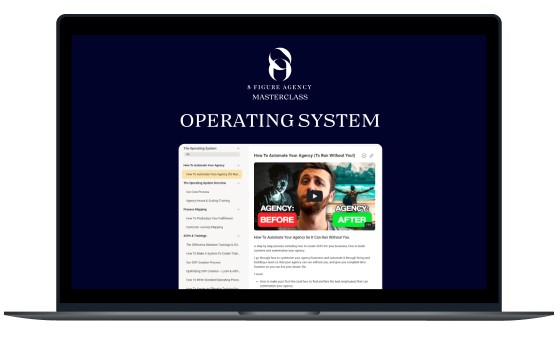Employee management is a term that refers to everything related to managing, developing, and interacting with your workers. The aim is for your team members to have all of the tools and benefits they need for you to achieve your corporate objectives.
Because of this, employers and executives must use their employees’ talent to the utmost potential by channeling their efforts in the right direction.
They should be permitted to work in a relaxed manner, allowing them enough area to develop and sufficient resources to innovate. You can only achieve that by good governance.
In this guide, we are going to discuss the different aspects of managing your employees. Let’s begin with its core benefits.
5 Benefits of Effective Employee Management
Employee management can benefit your company in a number of ways. When your employees feel like they are part of a team, their work can be more effective and efficient.
In addition to the obvious benefit of having a happy staff, there are some other benefits that come from effectively managing your employees:
#1: High Productivity
When employees are managed properly, they are more productive and efficient because they understand their roles. Plus, they have the resources and expertise to perform their duties on time, while reducing absenteeism by almost 41%.
They are also able to work harmoniously/productively with their colleagues, leading to better team spirit and output.
#2: High Morale
A good process or system to handle your team keeps the team’s morale high. If an organization offers flexible hours, honest appreciation, appraisals, etc. employees feel appreciated. They are more likely to work hard and more connected to the organization’s vision.
A long term research proved that a company with a thriving culture grew its revenue reby a staggering 682 percent.
#3: Top Talent Retention
When you manage your employees as they are supposed to be, attracting and retaining top talent becomes easier. Otherwise, organizations that offer career growth opportunities, competitive salaries, and a healthy work/life balance may appear to be more attractive to your employees. This not only affects their performance, but also the organization’s growth.
#4: Lower Attrition
Low attrition rates usually mean that a company has a great culture and takes really good care of its team members. However, when employees are managed poorly, they tend to leave their jobs more often.
#5: High Quality
Better management of your staff allows you to focus on the quality of their work. And that level of engagement with the staff will lead to better products and services, which eventually contributes to the company’s bottom line.
This is applicable to all sorts of organizations, so whether you’re looking for agency employee management or traditional employee management, your company would benefit from it.
Now let’s go over how to create a company that always takes care of its team in a way that’s mutually beneficial. It all starts with understanding the various aspects pertaining to employee management, which are discussed below:
- Recruitment – the first step to great management of employees in any organization is always the sourcing and hiring of great talent. If you hire a staff member who possesses all the necessary qualities to perform well in your company, you automatically increase the chances of your employees performing well too.
- Performance – knowing how to handle performance issues with your employees is another critical aspect of organization building.
- Advancement – advancement means that employees are able to move up within the company. And, just like recruitment, advancement is another key area that requires effective team management strategies.However, unfortunately, not many organizations provide a long-term advancement path to their employees. A report suggested only 29% of employees are “very satisfied” with the growth opportunities.So, if you intend to have a company with a motivated set of people, have a great career growth trajectory for them.
- Stability – once you have hired great talent and managed their performance, you need to ensure their stability in your organization. A stable environment that provides job security, salary-on-time adds a great catalyst to your organization’s growth.
- Interaction – managing the work itself is one thing but managing the dynamics of interpersonal relationships is a whole different ball game. You need to create an environment that’s conducive to creative conversations, idea sharing, and more.
- Rewards and Discipline – the final two elements of this are rewards and discipline. Giving rewards and maintaining discipline will help your organization to become and remain a great place to work, always.
10 Steps to Effective Employee Engagement
Employee management doesn’t have to be a daunting task. By taking a few simple steps, you can dramatically improve your team’s productivity and create a more positive work environment.
Here are ten steps to easily manage your team in a way that benefits everyone involved:
1. Communicate Clearly and Effectively
“The Art of Communication is the Language of Leadership” – James Humes
Communication is one of the cornerstones of happy employees and a growing company. It cannot be emphasized enough. When you communicate effectively and promptly with your workers, they understand what is expected of them and are able to fulfill their duties efficiently.
To take your peer-to-peer interaction to the next level, you must:
- Clearly state the goals of the organization and how each team member contributes to achieving these objectives.
- Make sure that all instructions and directions are clear and free from ambiguities.
- Ensure that your team understands what is expected of them, and more importantly how to do the task to get it done effectively.
- Establish communication channels like one-on-one meetings, discussions, or conference calls. That said, you can also encourage written communications to reinforce key messages.
2. Create a Culture Where Feedback is Welcomed
When you create a culture where your employees give their best openly without any fear of retribution and discuss their career growth, there are no misunderstandings.
In such an environment, everyone can reflect on their accomplishments, failures, and behavior freely so that they can improve upon them.
3. Manage Employee Performance
Employee performance is another critical component of employee management. If you don’t manage how they perform their roles and responsibilities, it can lead to decreased productivity and low morale.
But, how do you capitalize on their talent and get the most out of them?
You do that by clearly defining employee performance guidelines and expectations in your organization so that everyone understands what they need to do and how they can accomplish their goals.
Plus, you need to ensure individual accountability by using objective measures for all employees’ tasks and projects, regardless of their position in the company or team they belong to, helps too. Very few businesses work on the accountability within the team.
In fact, according to Anne Loehr, a transformational leader, 93 percent of employees don’t comprehend their company’s goal, therefore they can connect themselves with it.
And, when you set clear goals for each employee, review their performance against these goals periodically and provide feedback to help them achieve the desired results, your under-performers can be identified quickly and you will easily be able to take steps to improve their performance.
Using weekly or monthly goal-setting sessions with your employees is a great way to do it.
However, don’t just create goals, regularly monitor progress while ensuring that individual efforts, achievements are also recognized. No matter how small a contribution might be, make sure to celebrate and reward employees when they do something good.
To keep it even more simple, you can even use proven performance appraisal methods such as Management by Objective. It helps you grow the entire company, not just your staff.
4. Coach and Counsel Your Employees
Employees need occasional guidance and coaching to improve their productivity, stay on track with their work goals, and resolve any performance issues. This is where counseling comes in handy. You must:
- Understand their current work situation and identify any potential areas of improvement.
- Be familiar with the organization’s policies and procedures so that you can guide them on the right course of action.
- Provide feedback on their work performance in a constructive manner.
- Encourage them to take ownership of their work and be proactive in their approach.
- Offer guidance and support to them when needed.
- Make sure you document all the coaching and counseling sessions you have with your employees for future reference.
5. Discipline Employees When Necessary
Discipline is an important part of any company’s growth. It can keep everyone accountable for their actions.
Your company must make disciplinary procedures clearly defined in your employee handbook so that specific acts of misconduct or inappropriate behavior have clear repercussions.
You must inform employees about any changes in policies, rules, or expectations, and give them confidence and flexibility to adapt to the changes.
You can also use progressive discipline. To build that much-needed discipline at your workplace, you can try one of the most popular discipline methods––Progressive Discipline Policy.
Last but not the least, always keep the disciplinary action fair, consistent, and non-discriminatory across all departments in your organization.
6. Be an Active Listener
Employees need a manager who is an active listener so that they can feel comfortable coming to them with any concerns or problems.
As a good listener, you will be fully attentive and be able to engage in a meaningful conversation with them and help solve their problems.
So, what’s the best way to listen? Is it just about being there and paying attention? It seems to be much more than that.
We’re doing it all wrong, according to Zenger and Folkman’s research. Instead of seeing a good listener as a sponge that absorbs everything but provides no feedback, consider them a trampoline that amplifies and supports the speaker’s ideas by offering constructive criticism.
7. Manage Employee Conflicts Effectively
Employee conflicts can be disruptive and damaging to both the individual employees involved and the organization as a whole. It is therefore important to manage them promptly.
You can manage employee conflicts effectively by identifying the causes of the disagreement and addressing them accordingly. You need to encourage them to communicate with each other in a constructive manner to sincerely resolve the issue.
This will avoid conflict escalation and keep the business from getting affected by it.
8. Maintain Transparency and Integrity
With the growing number of corporate scandals plaguing companies these days, it is imperative for managers to maintain transparency and integrity within their departments.
Always be honest and trustworthy in every aspect of your work as a manager and make sure all employees can rely on you, especially when handling sensitive issues. You must also ensure that all policies and procedures are followed strictly.
Avoiding favoritism or nepotism in the workplace also gives employees an impression that their talent and hard work would be recognized and rewarded. Because remember, recognition is considered to be one of the most important things a company could do for its employees. In fact, one survey said 37% of people want it to be the most vital requirement.
9. Manage Change Effectively
In today’s constantly changing corporate landscape, it is essential for businesses to manage change effectively.
If the employees are able to adapt to new technologies, innovations, policies without any friction, the company will not just survive but thrive. But there are several challenges to change management.
So, how does one manage change effectively?
You need to adapt quickly to changes in the workplace and be proactive in their approach to it. You can even facilitate training and development programs that will help employees adapt to new changes quickly.
10. Develop Employees’ Skills
As managers, it is your responsibility to ensure that your team members are growing and developing in their roles. This will not only allow the company’s vision to be fulfilled but will also give them more opportunities for their career advancement.
Developing employees involves:
- Being aware of the various opportunities in your company and allowing your staff to take advantage of them when they are available.
- Providing feedback, guidance, coaching, mentoring, and training to build their skills for better performance.
- Offering rewards to those who have demonstrated excellence in their performance over a period of time.
- Inculcating a habit where employees set goals and work towards achieving them.
However, just implementing these steps won’t help. You also need to properly track, monitor, and enhance each step with good performance trackers as well.
You also need to know…
How to Manage Performance of Your Team
Performance tracking and monitoring are important for your employees to understand how they are doing, whether they are on track or need help, and what is expected of them. Here is how you can measure your team’s performance:
1. Create a thorough performance management plan
This includes the ability to set goals, improve communication between managers and employees, and create a clear path for performance management.
Step 1 – As the first step, set specific goals for each employee
Step 2 – Let everyone understands expectations and goals clearly
Step 3 – Use software or tool to create a visual path of achievement for each employee, detailing their goals, objectives, and progress
2. Ensure Transparency in Performance Management
You need to be open with your team about their performance. If there are any changes or obstacles that may affect their progress, make sure they are made aware right away so they can adjust accordingly. Keep things transparent.
One company that takes transparency on employee performance very seriously is Buffer. Everyone at Buffer app is extremely open about their financials, culture, failures, and business growth –– from the CEO down to entry-level employees.
They have everything published on their website, where not only employees and customers but everybody in the startup and social media ecosystem can learn all about their business.
3. Communicate Company Performance Standards
Make sure all employees are aware of the company’s standards and given clear instructions and ways to maintain that standard. To do this, you can conduct monthly or regular performance development meetings to help keep employees on track.
In these meetings, you can check if employees are on the same page and that everyone’s performance is being accurately tracked as per the set guidelines.
You can even meet with your employees one-on-one if needed to discuss personal performance development and how your company has high standards in helping employees reach those levels. And, go over specific areas where they need improvement and what steps they need to take.
4. Utilize Effective Tracking Tools
There are various tracking tools available that can help managers keep track of employee progress and performance. Utilizing these tools will not only help you keep track of progress, but it will also help employees stay on track.
The way to use these tools effectively is to ensure that employees are aware of their progress and what they need to do to improve.
Some tracking tools you can use are:
- Performance appraisal forms – these forms help you track employee progress and development over time.
- Employee goal tracking templates – use these templates to set goals, track progress, and celebrate successes with your employees.
- Employee development tracker – use this tracker to monitor employee skills, training needs, and development plans.
- 360-degree feedback tools – these tools provide end-to-end feedback from managers, peers, and direct reports so you can focus on development needs.
Conclusion
When you have a team of employees, it is your responsibility to ensure that they have the knowledge and skills they need to be effective in their work.
In turn, you must know how to manage employee performance so that they can grow and feel a sense of accomplishment with regard to their work.






